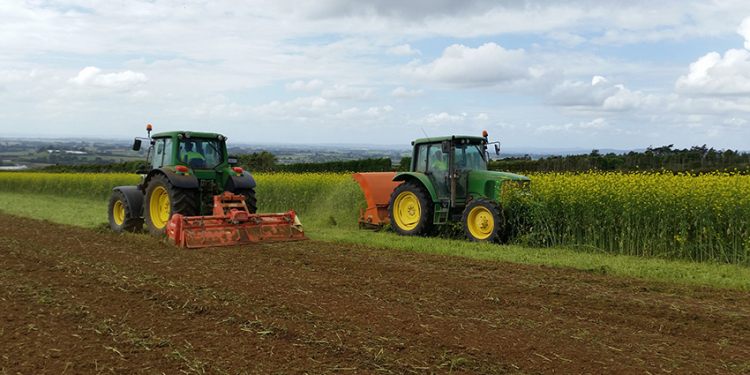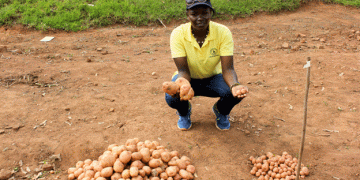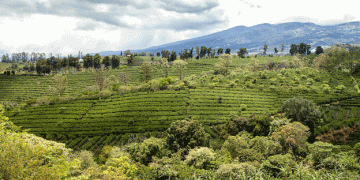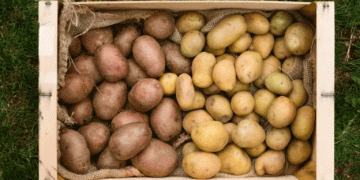Organic matter is the key to good soil fertility and climate-robust soil. B3W, the guidance service for better soil and water quality, organized a study session with grower Xavier Desmet to explore the role of crop rotation and fertilization in more detail.
Since the early 1990s, the organic matter contents of Flemish agricultural and horticultural soils have been declining. The climate challenge has put the topic of organic carbon in agricultural soils high on the agenda again. Farmers have long known that to maintain their organic matter in the soil, there must be an adequate supply of fresh organic matter in the form of crop residues or organic fertilizers.
Role of crop rotation and green manures
On his mixed farm, Xavier Desmet grows various arable crops such as winter wheat and potatoes and vegetables for industry such as beans and carrots. This wide combination of crops makes it possible to guarantee a stable supply of organic matter on his plots over the years. After crops with a rather low organic matter content, such as potatoes, crops with a high organic matter content, such as winter wheat, are always grown.
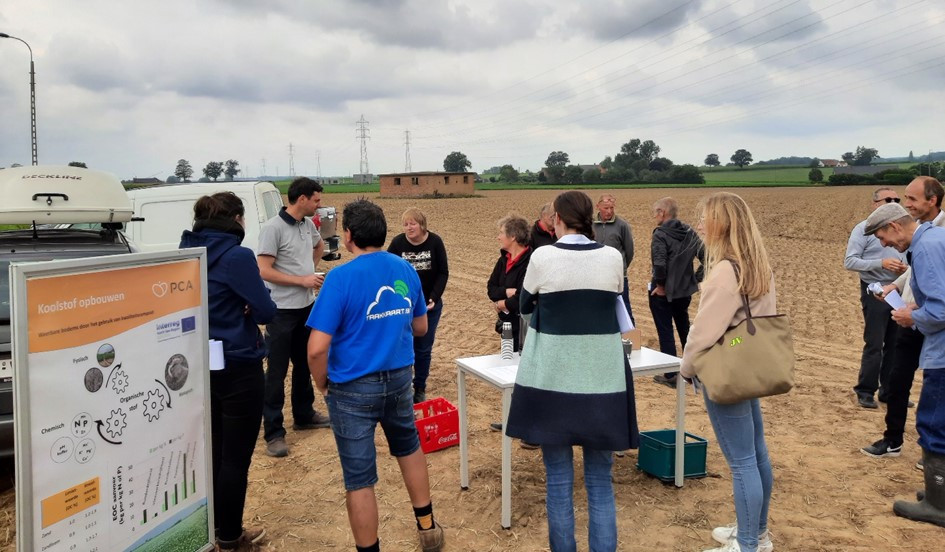
Green manures are also very important to Desmet: “As green manure, we opt for mixtures in which Japanese oats, yellow mustard or facelia are combined. Japanese oats are the outlier in a positive sense with an effective organic carbon of 1.2 tons per hectare. Such mixtures produce more biomass above and below ground than single green manures. As a result, both the nitrogen uptake from the soil and the contribution of organic matter to the soil will be higher than that of a single green manure.”
An important limiting factor for many vegetable growers is that they work in area type 2 or 3 in terms of fertilization and that they have to use the nitrogen utilization space on their farm for main crops. That is why nitrogen can no longer be applied to the green manures after winter wheat to initiate growth and development. “However, to build up organic matter, good development of the green manure is required. Scientific research from 2020 confirms Xavier’s experience and states that a limited nitrogen application (max. 36 kg active N per ha) after winter wheat contributes to a better development of the green manure and thus leads to a higher organic matter supply.
As a green manure for late crops, Desmet opts for some grasses and grains, such as Italian ryegrass and rye. As progeny he usually opts for a winter grain after a nitrate-sensitive main crop such as potatoes. For winter grain, an equivalent measure must be requested to make it count towards the target area of catch crops. It is not always easy to meet the proposed legal sowing date, due to difficult harvesting conditions for the main crop or due to weather conditions. “Some flexibility would benefit the workability and possibly also the development of the green manure or progeny crop,” says Vandermoere.
As a green manure for late crops, Desmet opts for some grasses and grains, such as Italian ryegrass and rye. As progeny he usually opts for a winter grain after a nitrate-sensitive main crop such as potatoes. For winter grain, an equivalent measure must be requested to make it count towards the target area of catch crops. It is not always easy to meet the proposed legal sowing date, due to difficult harvesting conditions for the main crop or due to weather conditions. “Some flexibility would benefit the workability and possibly also the development of the green manure or progeny crop,” says Vandermoere.
Role of fertilization
Desmet also keeps beef cows. He applies the farmyard manure that comes from this beef cattle on his own plots, and more specifically on crops that have a rather low organic matter supply, such as potatoes and sugar beet. By maximizing its fertilization with farm-own manure, Desmet can almost always completely fill in the required organic matter supply to maintain the organic matter levels. The organic matter input from solid manure is three times higher than for slurry.

However, the use of solid manure is not always sufficient to build up organic matter due to the limitation of the sales area due to the fertilization standards for phosphate. One possibility that the B3W supervisors put forward during this exchange moment is the use of certified compost. Vandermoere: “After all, these composts provide much more effective organic matter per unit of nitrogen and phosphorus they contain than solid manure and slurry.
In addition, certified composts contain only 15 percent active nitrogen. In addition, as an exceptional measure in the manure legislation, only 50 percent of the phosphorus content must be taken into account in the manure balance. For example, by applying 30 tons of green compost per hectare, you apply 3.3 tons of effective organic carbon per hectare, while you only use 31.
